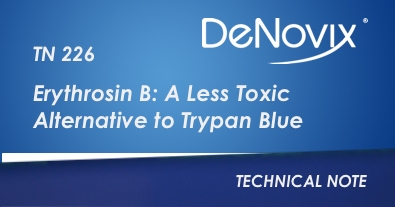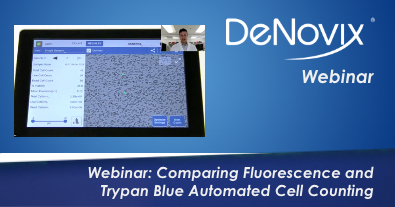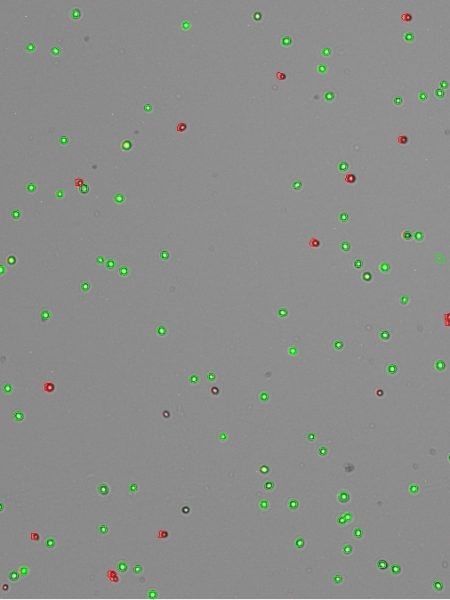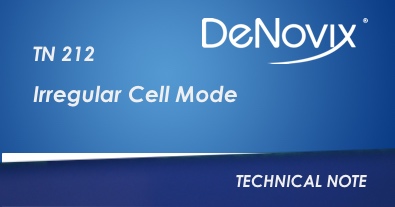This technical note demonstrates Erythrosin B as an alternative to Trypan Blue as a cell viability stain using the DeNovix CellDrop.
DeNovix Application Scientist Ben Capozzoli discusses methods and tips for preparing nuclei samples before single cell sequencing workflows.
This virtual demo of the CellDrop Automated Cell Counter features an introduction to the instrument's software, an explanation of the CellDrop's innovative technology, and live counts using both brightfield and fluorescence methods.
In this webinar, DeNovix Scientific Director Dan Schieffer explains the advantages of fluorescence for cell counting and viability assessment.
What’s the better method for viability assessments: Trypan Blue, or AO/PI? Download this free infographic.
Using the CellDrop Automated Cell Counter, DeNovix Scientific Director Dan Schieffer demonstrates both brightfield and fluorescence methods of cell counting and viability assessment.
To make the most of your automated cell counter, you can optimize the default protocols so suit specific applications or cell types.
Both brightfield and fluorescence cell counting techniques can provide accurate cell counts and viability assessments. Learn the advantages of each in this video.
Cells that are elliptical in shape and less perfectly round can be difficult to count with an automated cell counter. CellDrop includes Irregular Cell Mode to address this issue. This feature enables researchers to accurately count a wider variety of cells.
A webinar featuring a demonstration of tips for improving the accuracy of cell counts and viability analysis.













